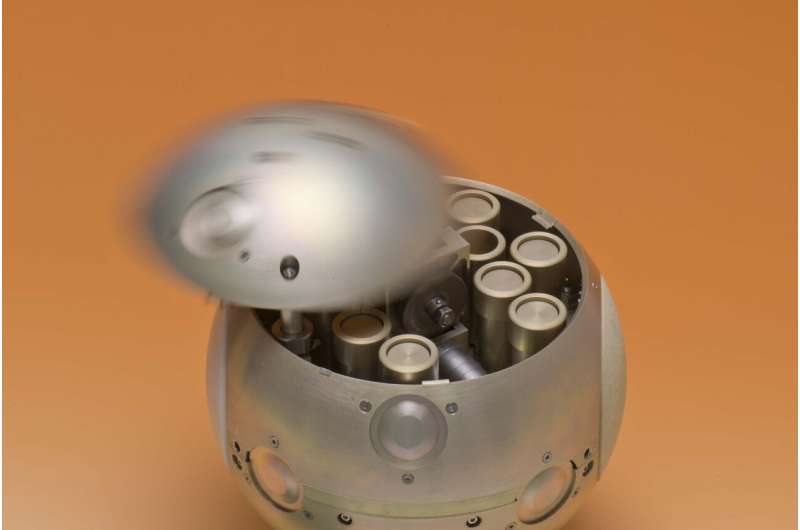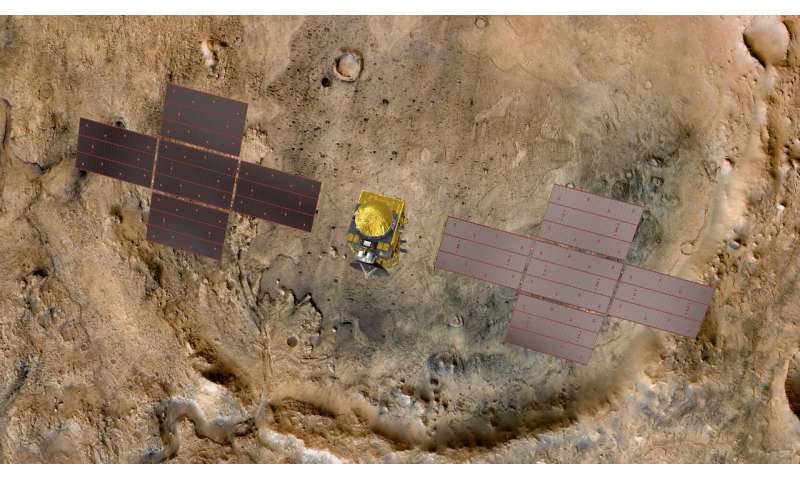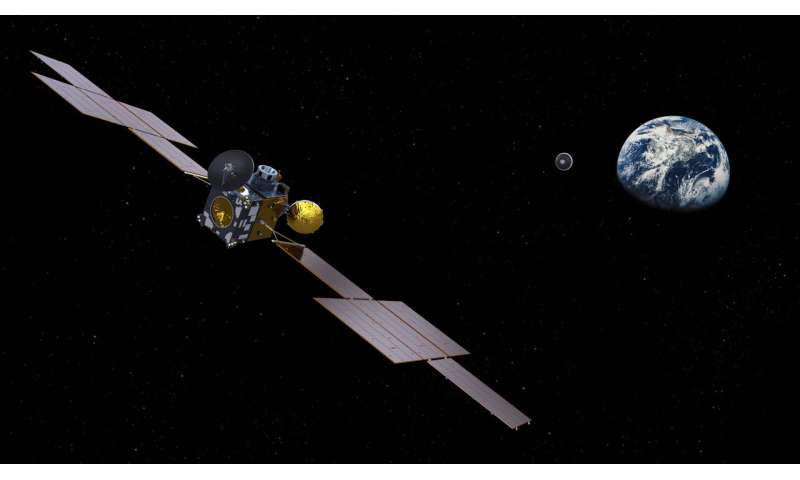Mars on Earth: What's next?

A Mars sample return campaign would bring samples of the Red Planet back to Earth for examination in the best terrestrial laboratories—but choosing the samples and storing them on Mars for later return is only one part of the extensive campaign being planned by the mission designers and scientists.
A series of missions currently being planned will set a new bar for humankind's technological achievements as NASA and ESA aim to bring back samples from the Martian surface.
The campaign foresees three launches from Earth and one from Mars, two Martian rovers and an autonomous rendezvous and docking in Mars orbit—over 50 million km away from ground control.
The Mars sample return campaign is aiming to bring Martian material back from Jezero crater that once held a lake and contains an ancient preserved river delta. The rocks in the area will have preserved information about Mars' long and diverse geologic history.
Sampling Mars will allow humankind to dramatically expand our knowledge of our neighboring planet, its geology and climate history.
With engineers in Europe and the U.S. up for the challenge, scientists are eager to receive the first samples from another planet and have already started investigating and preparing how they will analyze the precious, rocks, dust and gas once the samples are returned to Earth.
Containment and contamination control
An important question is how to analyze the samples while both protecting them from contamination by Earth's chemical signatures, and also keeping them inside a secure contained environment.
On arrival the samples will go into quarantine much like the lunar rocks that returned to Earth on the Apollo and Luna Moon missions. International planetary protection guidelines are being revised in preparation for Martian samples, and getting an update to incorporate more modern technology.
Quarantine will be inside a Sample Receiving Facility, where the samples will already offer a treasure trove of information for scientists even before they are opened. Any Martian dust that might cover the outside of the sample tubes can be analyzed and non-invasive techniques such as X-ray investigations can be run, even on unopened tubes.

After the samples tubes are opened, a pre-determined set of initial measurements will generate a detailed catalog of information, which will allow specialized science investigations to target specific parts of the samples.
Messages in bottles
"The sample tubes will contain Martian rocks, dust and atmosphere," says Elliot Sefton-Nash, the MSR Study Scientist from ESA's Science Support Office, "Even though the plan is to open the tubes in a contained and inert environment, for a few measurements the clock will be ticking: for example, trapped gases in the sample material might start to mix with their surroundings, which could modify the Martian chemical signatures that we want to measure."
Choosing the order to process the multitude of measurements that scientists want to do is a headache of interplanetary proportions. The samples will need to be eventually sterilized according to the planetary protection protocol, which could require heat, radiation or chemical processes. But the sterilization procedure itself could change some samples from their original state, meaning that some "sterilization sensitive" investigations need to be done inside containment, before sterilization happens.
-

Artist's impression of ESA's Earth Return Orbiter flying over Mars. Credit: European Space Agency -

Artist's impression of ESA's Earth Return Orbiter and Mars sample container over Earth. Credit: European Space Agency
The good news is that a recent publication from the Mars Sample Return Science Planning Group reports that roughly three quarters of all the measurements can be achieved after sterilization.
The ordering of subsequent investigations is important, as some measurements will influence others. Some must destroy sample material to get results, and not all measurements can be done on all samples. The laboratory itself can be a decisive factor—measuring carbon precisely will require strict controls on how much carbon can be used in the laboratory, so an all-metal laboratory might be needed to get valid results. On the other hand, a metal laboratory would contaminate samples for other measurements, so a careful balance is needed. How to ensure the best science gets done on the samples in the best laboratories in the world—and in what order—is another puzzle.
After ESA's Space19+ council, where the future and scope of ESA's involvement in the Mars sample return Campaign will be decided, the participating agencies (currently NASA and ESA) in concert with the science and technology communities, will continue solving the challenge of how to best make discoveries with samples returned from Mars.
"Mars sample return would be a huge advancement for Mars science and the exploration of the solar system," concludes Sanjay Vijendran, ESA's Mars sample return campaign coordinator. "The samples will fundamentally advance our understanding of Mars, the history of our solar system, and will help us plan for future exploration missions."
Provided by European Space Agency





















